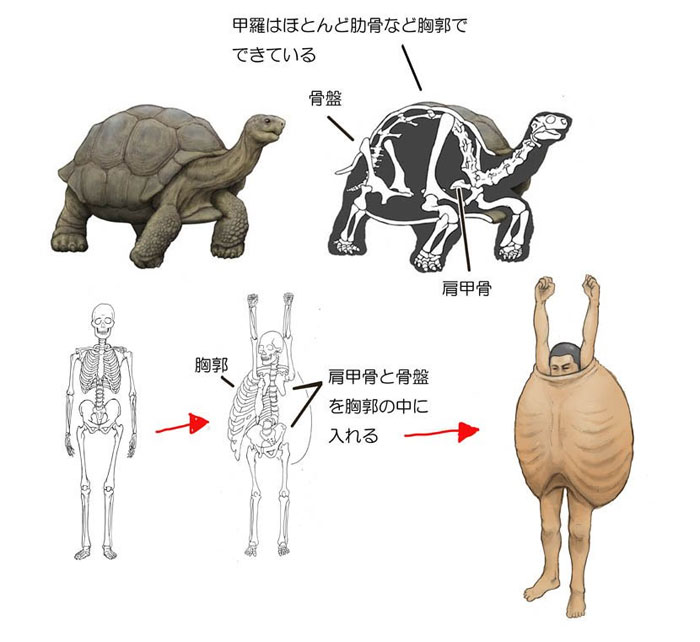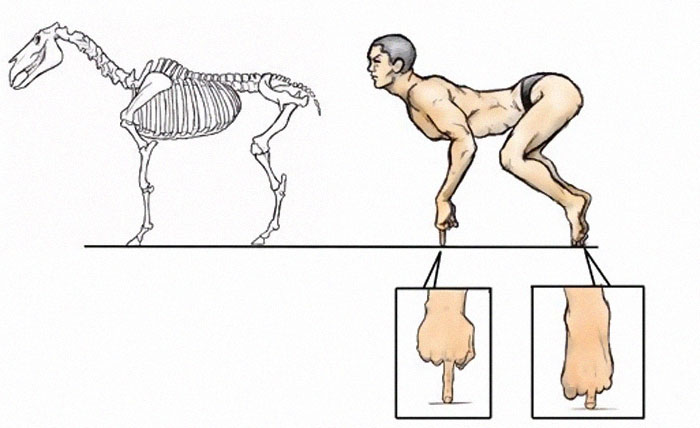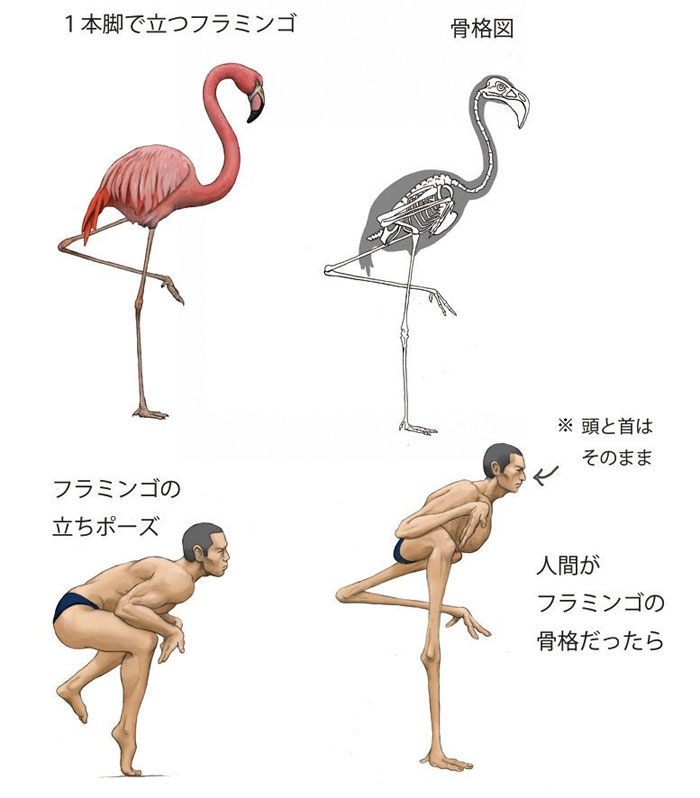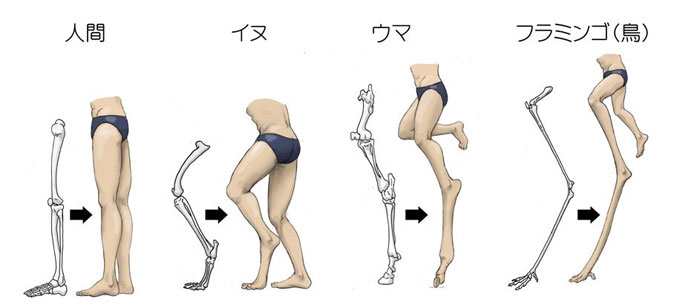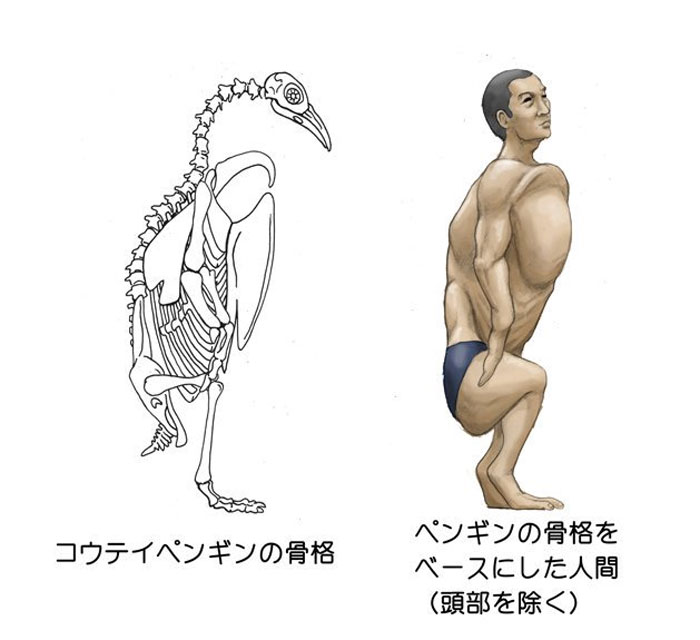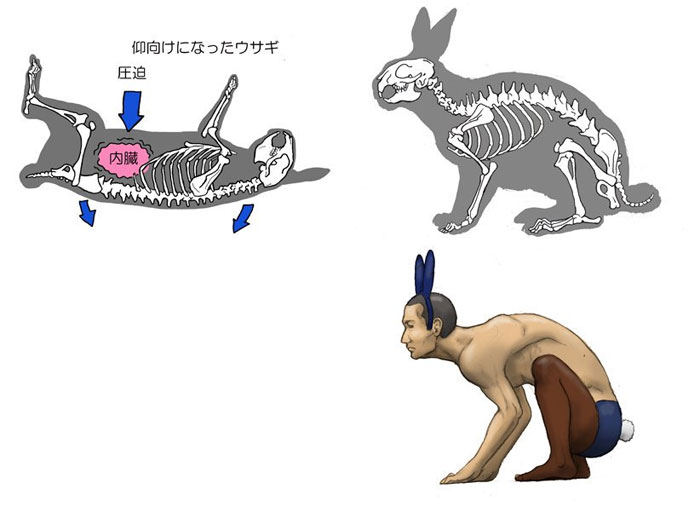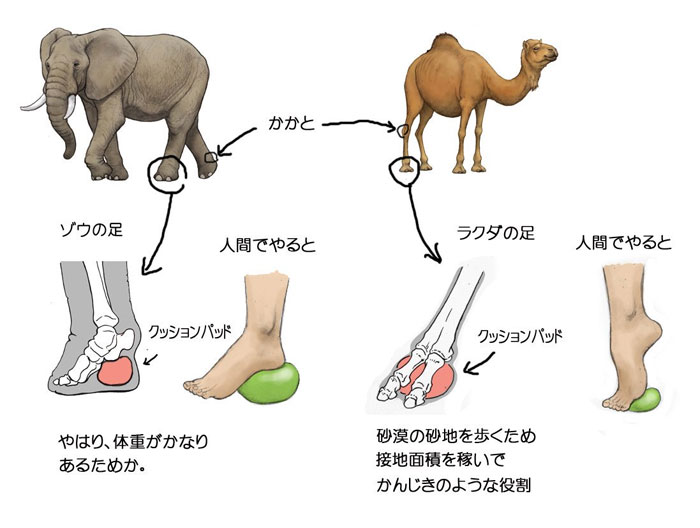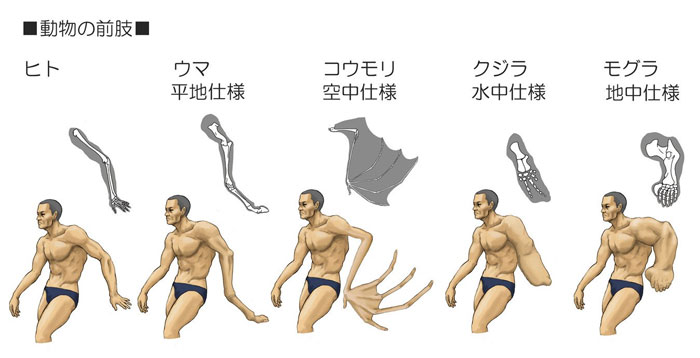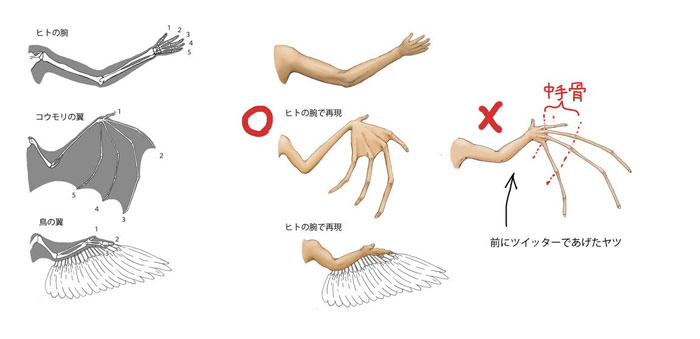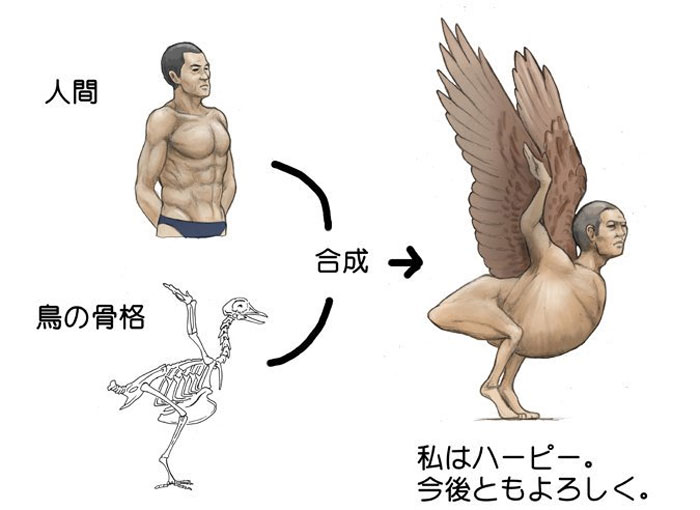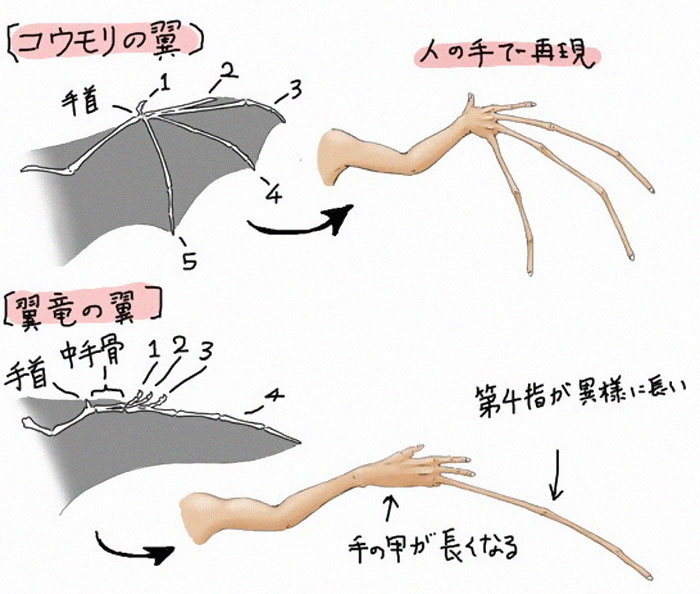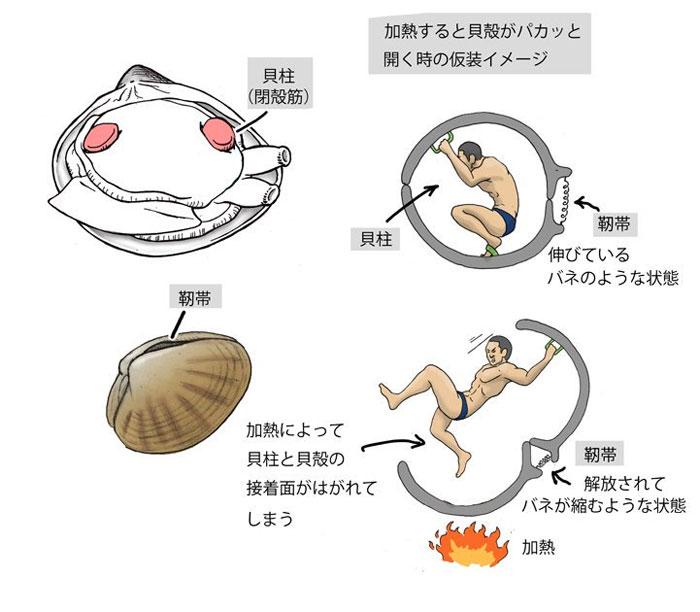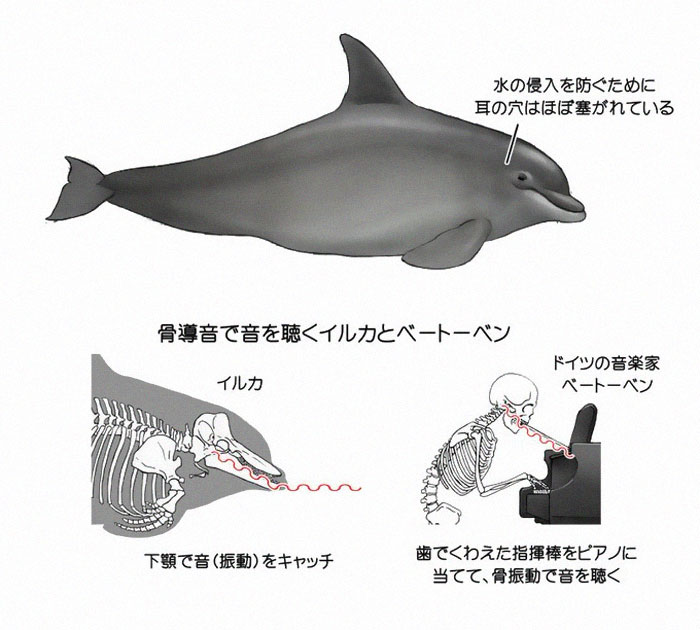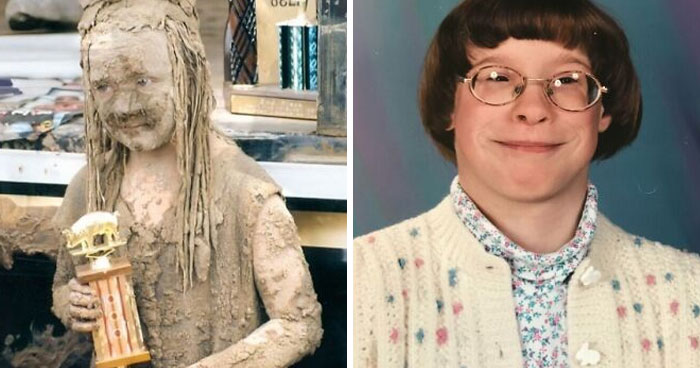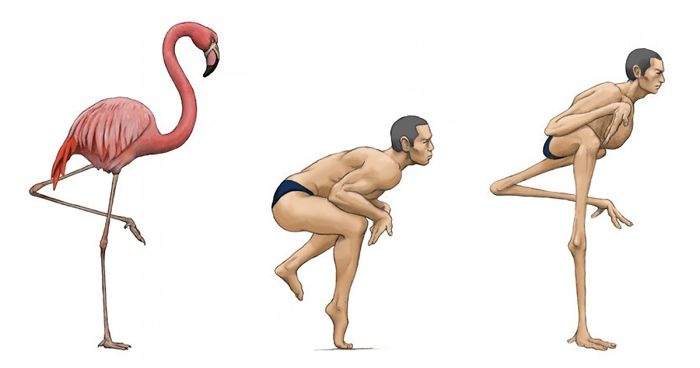
Japanese Illustrator Shows How Humans Would Look If We Had Various Animals’ Bone Structures (14 Pics)
One of the things I love most is looking at peculiar, interesting, and original artwork that pushes the boundaries of what we as a society find to be beautiful and acceptable. Nobody can deny that Japanese artist Satoshi Kawasaki is stunningly imaginative and enjoys creating incredibly detailed and sometimes strange, even bizarre drawings.
Kawasaki recently created a series of intricate drawings about what people would look like if they had the bone structure of certain animals and posed just like them. Here are the very best and coolest drawings from the artist’s series about animal-humans, so upvote the ones you think are the most impressive and keep on scrolling. Oh, and let us know in the comments what you think of Kawasaki’s anatomically correct artwork.
More info: Twitter | paleontology.sakura.ne.jp
This post may include affiliate links.
The turtle's skeleton is quite unique, and the shell is mostly made of a “thorax” such as a rib, with a scapula and pelvis in it. Based on this turtle skeleton, what would happen if you tried it on yourself? I drew a little picture.
This is the exact opposite of when my testis suck up inside my stomach
Either it's a s*****m or it's the head of a penis with something crawling out of the urethra
The horse has 'lost' all its fingers except for the middle one due to evolution.
I... had no idea that horses had evolved to flip us off - although, considering what they've been used for - I get it.
Flamingos often stand on one leg and sleep with one leg standing. The flamingo's body shape is also extreme, so I drew an illustration of a flamingo skeleton if a human poses while standing on one leg.
WOW these are all so very clever. To strip us down and rewrite us is a thing only the gods have done till now.
"A flamingo standing on one leg" "Skeletal structure" "Flamingo standing pose" "If a human had a flamingo's skeletal structure" "* head and neck left as-is"
My mother collects flamingos... This has given me complicated feelings XD
That's the way a birds wing is formed. their ancestors used to have claws, but I suppose the bone structure changed to enable flight 😊
Load More Replies...Japanese illustrator Kawasaki is best known for his detailed drawings of extinct, modern and futuristic animals. He deals with the topics of paleontology, and evolution, both actual and theoretical.
Bored Panda talked to Kawasaki to learn more about him and his work. Kawasaki said that he became a 'real' artist after starting his own homepage and blog. "I like to draw, so I've always wanted to do that," he said when asked whether he always knew he wanted to be an artist.
Kawasaki mentioned that he reads books and searches the internet to come up with various ideas for his illustrations. What's more, the artist said that each illustration takes a different amount of time to draw and that it all depends on the content and the context. Finally, Kawasaki added: "I have no choice but to continue drawing."
Often, the foot of animals is mistaken for an ankle as a knee, so I tried to draw what would happen if I made the human foot the bone base of another animal's foot.
I am so so sad that humans don't know this by default. This is something that needs to be taught in schools, it's simple, it's effective and it proves evolution perfectly.
I found this out on my own some time ago while walking on my tippy toes. I was a deer🦌!
The labels above each, from left to right, say: "Human", "Dog", "Horse", and "Flamingo (bird)"
There were many requests for a penguin applied to a human skeleton.
"Emperor penguin skeletal structure" "A human with a penguin's skeletal structure as a base (minus the head and neck)"
Oh gawd. Okay. Done. Penguins do it far better than humans. This is creepy... BUT ALSO COOL.
Rabbits are always stooped, so it seems to put a lot of burden on your back when you stretch it.
Rabbits are always stooped, so it seems to put a lot of burden on your back when you stretch it. 50411534_2...25d479.jpg 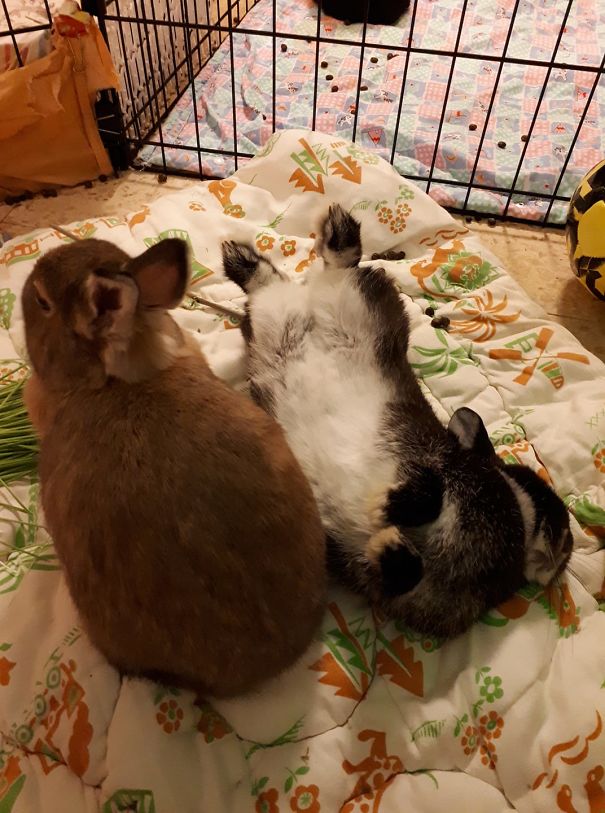
The artist has more than 12,700 followers on Twitter, which shows just how many people are wowed by his nature drawings, some of which have a comedic twist. And I agree that Kawasaki deserves his fame: his drawings have a certain je ne sais quoi that mesmerizes you and makes you look at the illustrations far longer than you would otherwise.
Elephants are so big, but they stand on their tip-toes, and camels stand more like ballerinas. However, they get support from a fleshy cushion pad on the sole.
There are various environments on Earth such as grasslands, forests, mountains, sea, sky, and underground. The animals have adapted and evolved to their various environments, but the body parts that shows the most change in adaptation are the “front legs" (arms). So I tried to draw what happens if the human arm is reproduced with the skeleton of various animal forelimbs.
"animal fore-legs/arms" "human" "horse (used on ground)" "bat (used mid-air/mid-flight)" "whale (used in water)" "mole (subterranean use)"
YES YES YES, finally another person who understands that front limbs of vertebrates are arms! Not all hope is lost
What I find really fascinating is that orcas have more-or-less the same bone structure in their pectoral fins as humans have in their hands, the bones are just more elongated!
If you google for syntoil freaks there's a chap who has both his arms looking just like the rightmost, one normal and another abnormal... There you go. He was the leftmost one, but I think I saw a photo during work in progress and might be he did one arm at a time. https://sadanduseles...hol-freaks4.jpg
The katakana (Japanese characters used for the romanisation of foreign loan words) says “mogura” which translates to “mole”
Load More Replies...The illustration of "Reproducing the bat wings with human arms" that I made a long time ago was wrong. What was wrong was that the metacarpal bone (the bone on the back of the hand) was part of the finger. I also drew "Illustration of Bird Wings with Human Arms."
If you think that animal-human anatomy hybrids are the stuff of fantasy, think again. Scientists are already thinking about the idea of developing them, in order to grow valuable organs for transplants. Organ donor waiting lists are very long and not all people get the organs they need in time.
Half-human half-bird monsters called “harpies” have appeared in Greek mythology, but I tried to draw this harpy with a skeleton base of a bird (no tailbone, human head) and a human body.
It looks disturbingly like these savepoint chicken things from Zeldas Twilight Princess...
Jeez, if that's what it takes to have wings I'll stick to plain old run of the mill super powers. Plus someone is going to have to redraw all those Angel paintings.
This reminds me a lot of Ba, the Egyptian god which represents an aspect of the soul. They are pictured as creatures with a body of a bird and a head of a human.
Looks like the Greek myths. Could have been someone just drawing humans as animals for a laugh all along.
If people had chests like pigeons.
I compared the difference between bats and pterosaur wings in human hands.
According to Medical Xpress, Japan “recently overturned its ban on the creation of human-animal hybrids and approved a request by researchers from the University of Tokyo to create a human-mouse hybrid.” Researchers are aiming to grow a human pancreas inside a mouse, which isn’t quite the same thing as merging mice with people; but science is getting closer and closer to making actual ‘chimeras.’
However, this kind of research leads to some very serious ethical questions, namely, whether what is being done can be considered to be good and moral or not. On the one hand, these organs could save many lives; on the other hand, this comes dangerously close to interfering with nature in ways that make us intuitively reject what’s being done.
What do you think of Kawasaki’s skeleton drawings, dear Pandas? Do you have any thoughts about scientists’ plans to grow human organs in animals? Don’t be shy, share your thoughts with us.
When shellfish (bivalve) are heated, the shells open. The shell is closed by a muscle called a scallop (closed muscle), and when the muscle is loosened, the shell opens. When heated, the protein in the muscles changes and the adhesion between the shell and scallops peels off, so the shell appears to open vigorously.
Wait. Hold up. Since when is the adductor muscle in a bivalve called a scallop? I mean... I know the actual creature, the scallop happens to have a HUGE adductor muscle (hence why we eat it and we all forget that the delicious scallop has organs that were thrown out) - ??? - My bio profs never told me this...
They aren't called scallops -- Whomever wrote that the muscle itself is called a scallop got this part wrong. The adductor muscles are called adductor muscles (even in bivalve shellfish).
Load More Replies...This diagram is the absolute best one of the bunch! The guys face when heated lmao!
BWAHAHAHAHA. Sorry - just... the thought of the creature inside going full parkour kick on you when you heat it: "Steam THIS, b***h!!!"
Kaibashira (貝柱) may be called scallops but is actually the adductor muscle of any kind of shellfish. Scallops in the normal context are several species of bivalve - the adductor muscle is the part of a scallop that is consumed, so it's an easy cross to make.
There are two ways to transmit sound to the ear. Sound transmitted by air vibration is “air conduction sound.” Sound transmitted by bone vibration is “bone conduction sound” Dolphins in the water listen to sound through bone conduction sound. Beethoven suffered from deafness as a musician, but he overcome it with this bone conduction.
The translation isn't a translation. Is it that hard to find someone who speaks Japanese?
I wish I was still in touch with my Vertebrate Bio professors - I'd forward this to them - I'm sure they'd appreciate it..... then immediately get to correcting/adjusting it like a term paper.
I wish I was still in touch with my Vertebrate Bio professors - I'd forward this to them - I'm sure they'd appreciate it..... then immediately get to correcting/adjusting it like a term paper.

 Dark Mode
Dark Mode 

 No fees, cancel anytime
No fees, cancel anytime 






